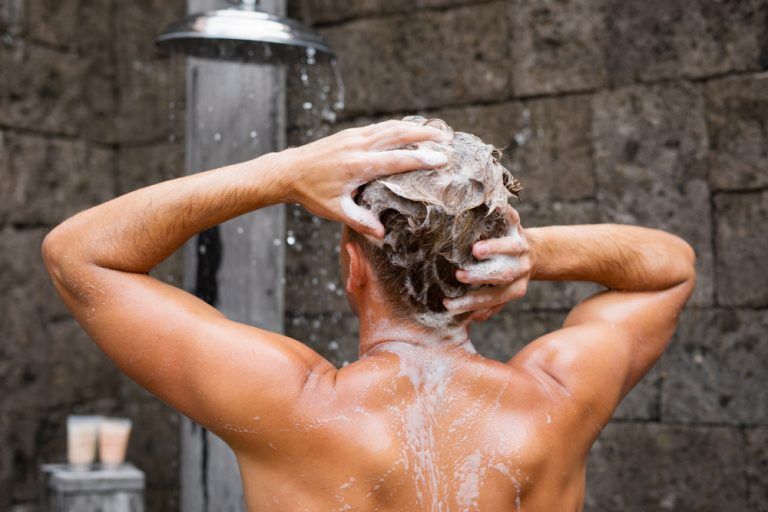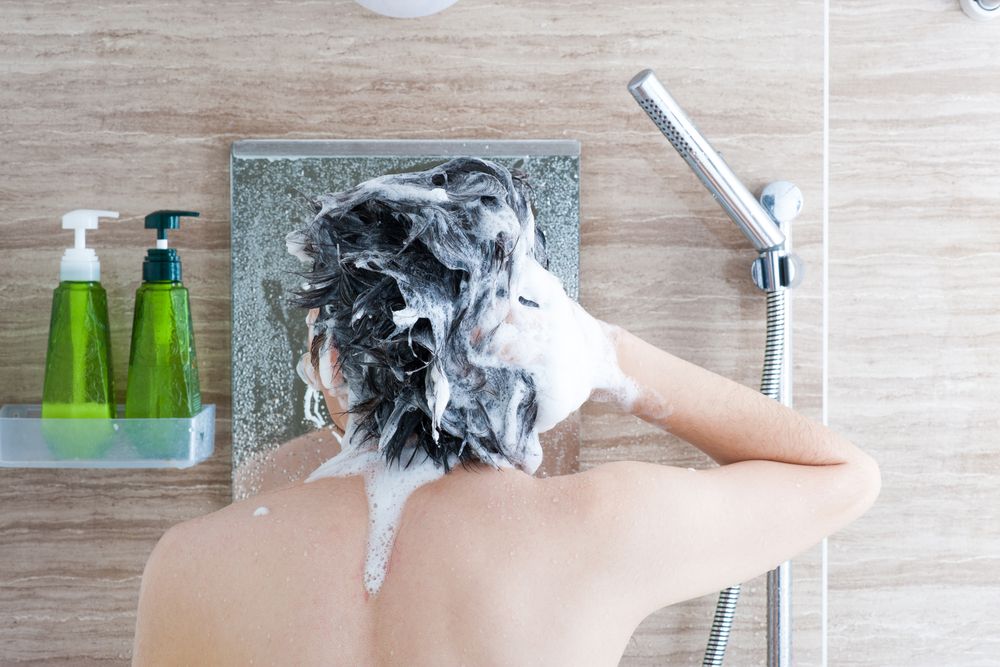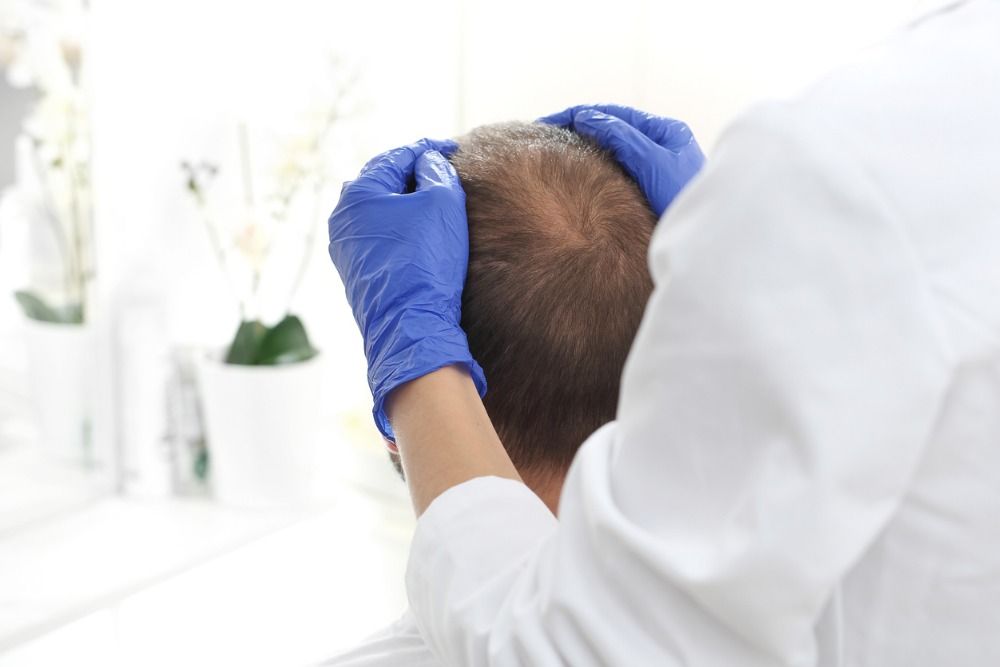DHT Shampoos: Pros, Cons & Do They Work?
By: Noah W Chung | PharmD
Dihydrotestosterone (DHT) is an androgen hormone produced by testosterone. High levels of DHT can cause hair loss problems, including androgenetic alopecia (AGA) and male pattern baldness. (Learn More)
Prescription DHT shampoos like ketoconazole reduce DHT production by targeting the hormone cycle locally at new hair growth follicles. (Learn More)
Over-the-counter DHT shampoos aim to lower DHT levels, often using natural products that may reduce DHT, including saw palmetto and pumpkin seed oil. These shampoos may also use other hair-enhancing ingredients like biotin, keratin, and caffeine. (Learn More)
Studies indicate that prescription DHT shampoos are effective in treating hair loss, especially when combined with other hair loss treatments. There is limited research concerning natural DHT-lowering products. (Learn More)
The side effects from DHT shampoos are generally mild. They may include skin problems like itchy and dry skin. (Learn More)
People suffering from hair loss caused by androgenetic alopecia (AGA) or telogen effluvium may find DHT useful in their treatment program, especially those in the earlier stages of hair loss since DHT shampoos can’t reverse hair loss. Men taking 5-alpha-reductase inhibitors or other hormonal hair loss medications may use DHT shampoos as part of their combination treatment. (Learn More)
What Is DHT, and How Does It Cause Hair Loss?

Dihydrotestosterone (DHT) is a hormone. More specifically, it is a sex steroid that is produced in the gonads. As an “androgen” hormone, it plays an important part in male biological characteristics like muscle mass, the development of body hair, and deepness of voice. In men, DHT is created when an enzyme called 5-alpha reductase (5-AR) converts testosterone into DHT in the prostate and testes. DHT attaches to the same sites as testosterone, but it is more potent and bonds for a longer period. DHT’s role in hair growth is complicated. DHT is believed to attach to hair follicles through androgen receptors, and it is needed for most hair growth. Armpit hair, pubic hair, and other body hair will not grow without DHT. However, it has a negative affect on head hair growth. For unknown reasons, high levels of DHT trigger hair loss and thinning. It may be a major factor in androgenetic alopecia (AGA), also called male-pattern baldness, although AGA is experienced by both men and women. Male-pattern baldness, or AGA, is the most common cause of male hair loss. Hair loss is very common among men, affecting almost half of all men over the age of 50. Nearly 50 million men and approximately 30 million women in the U.S. suffer from AGA.
How Do Prescription DHT Shampoos Work?
Because high levels of androgen hormones can cause hair loss, prescription DHT shampoos like ketoconazole are “anti-androgenetic.” They prevent the formation of the androgenetic hormone DHT, as well as the formation of testosterone, which is converted to DHT. The shampoo targets these hormones locally, at the site of new growth hair follicles. The goal is to disrupt the hormone cycle that is causing thinning and baldness.
What Other Kind of DHT Shampoos Are Available?

Many over-the-counter hair loss shampoos also target DHT, sometimes using natural ingredients that have shown promise in lowering DHT levels. Common natural ingredients used in over-the-counter DHT shampoos include saw palmetto, pygeum bark, and pumpkin seed oil. Many of these over-the-counter hair loss shampoos may also feature other ingredients thought to revitalize and boost hair growth, such as biotin, caffeine, keratin, and rosemary oil.
Do DHT Shampoos Work?
There has been limited research on shampoos that include potentially DHT-limiting natural ingredients like saw palmetto in the treatment of male pattern baldness (androgenetic alopecia, or AGA), although some initial findings indicate potential promise. Prescription DHT shampoos like ketoconazole, however, have been shown in studies to effectively treat hair loss and androgenetic alopecia (AGA), especially when the condition was treated aggressively and persistently with the shampoo. Prescription DHT shampoos like ketoconazole have also been shown to work more effectively when taken with an oral medication that lowers DHT levels, such as finasteride, a 5a-reductase inhibitor that blocks the enzyme that converts testosterone into DHT. There are some limitations in treating hair loss with DHT shampoos. Like other DHT-lowering medicines, the effects of these shampoos only last as long as you use them. If prescription shampoos are stopped, the symptoms will return. While DHT shampoos may be able to awaken active hair follicles that are somewhat dormant, follicles that are already inactive won’t be affected.
Do DHT Shampoos Have Side Effects?

Most DHT shampoos, like ketoconazole, have minimal side effects. They may include the following:
Skin blisters
Texture changes to hair
Itchy skin
Skin irritation
Skin dryness
If you experience more severe side effects after using DHT shampoo, such as hives or breathing trouble, you may be having an allergic reaction and should seek immediate medical care.
Who Is an Ideal Candidate for DHT Shampoos?
Men and women seeking treatment for a scalp fungal infection or dandruff may find DHT helpful. DHT shampoos may be used by both men and women to treat hair loss from androgenetic alopecia or telogen effluvium. Because DHT shampoos work to prevent hair loss and possibly rejuvenate dormant follicles, and do not reverse hair loss that’s already occurred, those in the earlier stages of hair loss are ideal candidates. Men who are taking oral hormone prescriptions for hair loss, like finasteride, may also use a DHT shampoo like ketoconazole as a combination therapy.
References
Everything You Need to Know About DHT. (July 28, 2017). Medical News Today.
Androgenetic Alopecia. (May 14, 2019) U.S. National Library of Medicine.
15 Shampoos for Hair Growth That Actually Work. (March 5, 2019). Elle Magazine.
Saw Palmetto for Hair Loss: Myth or Miracle? (October 10, 2016). Healthline.
Effect of Pumpkin Seed Oil on Hair Growth in Men with Androgenetic Alopecia: A Randomized, Double-Blind, Placebo-Controlled Trial. (April 23, 2014). Evidence-Based Complementary and Alternative Medicine.
Hair Loss Treatment: Nizoral. (February 8, 2011). Everyday Health.
Comparative Effectiveness of Finasteride vs. Serenoa Repens in Make Androgenetic Alopecia: a Two-Year Study. (October 2012). International Journal of Immunopathology and Pharmacology.
Pilot Study of 15 Patients Receiving a New Treatment Regimen for Androgenetic Alopecia: The Effects of Atopy on AGA. (April 11, 2011). ISRN Dermatology.
Ketocazole as an Adjunct to Finasteride in the Treatment of Androgenetic Alopecia in Men. (2004) Medical Hypothesis.

Related Articles

DHT Shampoos: Pros, Cons & Do They Work?
Dihydrotestosterone (DHT) is an androgen hormone produced...

Nutrition and Skincare
A nutritious diet can benefit you in a number of ways...

PRP Injections for Hair Loss: Worth It or Not?
PRP stands for platelet-rich plasma, a component of your...

Perceptions of Personal Grooming
A new lover calls up, and although you're ready to get it...
